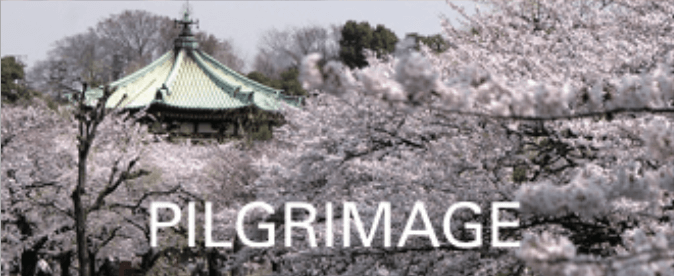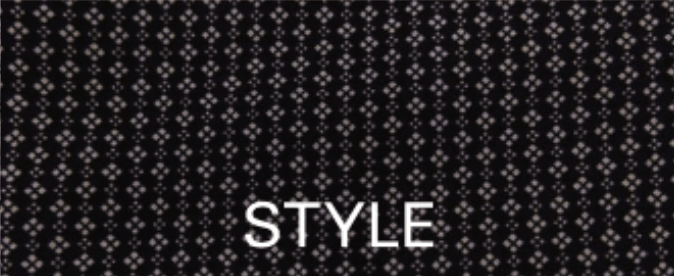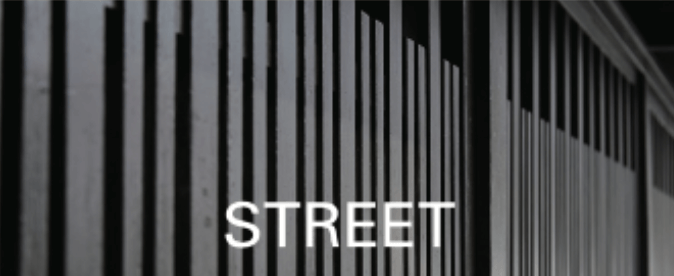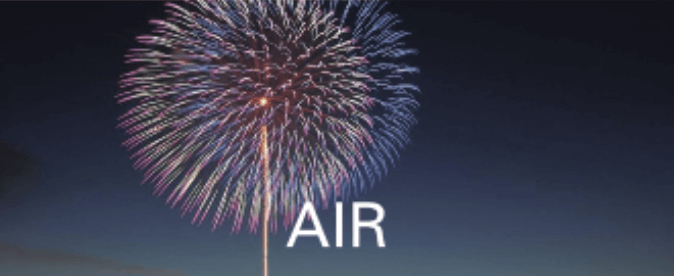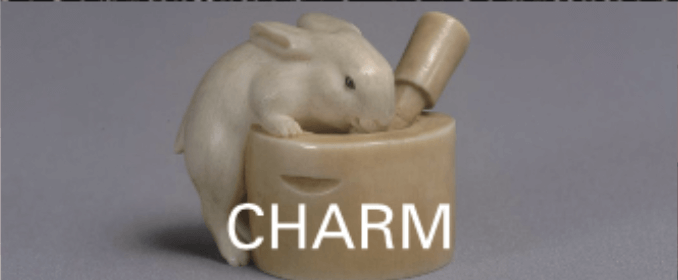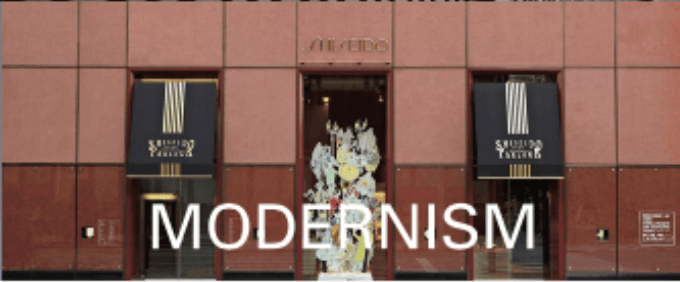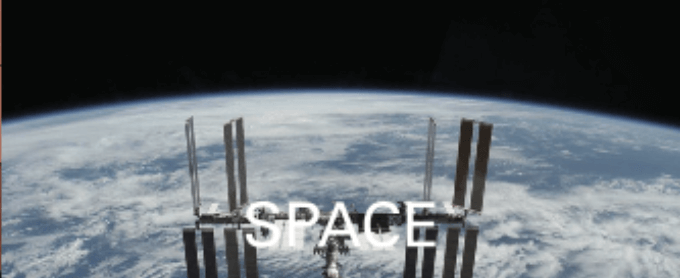
Maizuru City’s modernization was Red Brick Warehouses and railway construction. The warehouses were built in 1900 in the military port area, which was a private food warehouse after World War II. They are now a cultural exchange facility for citizens.
At the Maizuru City Commemoration Hall at the Red Brick Warehouses district, a dugout (canoe) about 5,300 years ago in the Jomon period (16,000 years ago – 3,000 years ago), is exhibited.
The latest Ice Age ended 10,000 years ago, and the culture south of the Yangtze River in China gradually moved north along the Kuroshio, the Japan Current. Maizuru City offers a space-time journey to the modern times and to the ancient times, too.
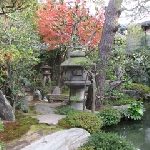
This museum is located in the former residence of Namikawa Yasuyuki (1845 – 1927), a Japanese cloisonné artist, who was highly acclaimed both in Japan and abroad during the Meiji period (1868 – 1912) and the Taisho period (1912 – 1926).
His screen composition and sense of color, were refined and created a “pause” in the small world, by putting the glaze in between tape-shaped metal wires, and repeating firing and polishing.The inside of the building is the same as it used to be.
And you can also enjoy the magnificent garden which uses the water from the Biwa Lake Canal that was drawn for the polishing the cloisonné wares. And you can feel the chastity that Namikawa loved.
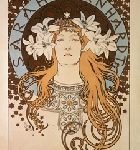
Alfons Maria Mucha (1860 – 1939), a Czech painter, illustrator and graphic artist, is a representative painter of Art Nouveau, a decorative style that emerged in Europe at the end of the 19th century. Yosano Akiko (1878 – 1942), a Japanese author, poet, and pioneering feminist, came from Sakai City. Akiko and Mucha were featured in the Magazine Myojo, a monthly literary magazine published in Japan between 1900 and 1908. This connected the two artists, who were active at the same time.
Sakai City possesses approximately 500 works of Mucha, collected by Doi Kimo (1926 – 1990), a Japanese businessman and the founder of Doi Co., Ltd., a photography business. This museum introduces a wide range of works, from the early years to the later years of Mucha from their rich collection.
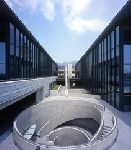
The beach of Iwaya Nada, seen from Mt. Maya was reclaimed in the modern times and became an industrial area. The museum was built to restore the richness of the heart, through art, after the Great Earthquake in 1995.
The building, like a huge labyrinth, was designed by Ando Tadao (1941 -), which is integrated with the sea, spread in front of the museum. The 8,000 item collection knows the taste of the people who endured difficulties.
Those images that believe in revival are as warm as the statue of Queen Maya, Mother of Buddha, which has been enshrined at Mt. Maya.
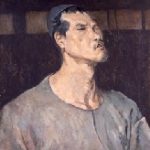
This museum has bright green filling the glass windows in the lobby entrance. The view is a masterpiece. The adjacent Shukkeien Garden is a Japanese style garden with a path around a central pond, which was created by Asano Nagaakira (1586 – 1632), the 1st lord of the Hroshima Domain. The garden contains miniature versions of a number of scenic spots in Japan. Shukkeien, in Japanese, means “reduced scenic garden.”
The museum possesses a wide range of genres of art, such as artists and works related to Hiroshima, including Aimitsu (1907 – 1946), the leading painter in Japanese modern art, Japanese and Asian craft works, including important cultural properties, and Western paintings, including Dream of Venus (1939) by Salvador Dali (1904 – 1989), a Spanish surrealist painter. You can enjoy the time of art appreciation while feeling the passage of the seasons.
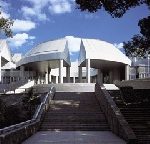
The museum opened as the first museum dedicated to contemporary art nationwide. It collects and exhibits Post-World War II art after and works related to Hiroshima City, which introduces the beauty of Hiroshima and its depth. Throughout the year, it holds special exhibitions that introduce cutting-edge expressions and exhibitions from selected works of the collection.
– The museum is located by Mt. Hijiyama, with an altitude of 71m, famous for its cherry blossoms. This mountain hill is about 1.8km at the east of ground zero of the atomic bomb, which protected the blast from spreading to the east. This museum also looks like the Temple of Apollo.

You can see the most beautiful moon in Japan from this museum. Taigetsu, the mind of the waiting moon is by Okuda Genso (1912 – 2003), a Japanese painter. This museum was designed so that the moon crossing in the night sky would float on the surface of the water, after rising from the eastern mountains. It is regarded as a work of art, in order to reproduce “Taigetsu.”
Although “Genso’s Red” in his paintings is well-known, as the strong impression of the works, Okuda Sayume (1936 -), a puppet maker, created a colorful female image, as a contrast. His work, Ushio, tide, expresses a youthful feeling beyond the concept of the “doll” in blue, which is associated with the sea.

This museum is a masterpiece of Fine art ceramic tile. The works of this museum were reproduced on ceramic tiles. The colors of works exhibited at this museum do not deteriorate over time, compared to the works of painting on paper, canvas, and clay walls.
At this museum, more than 1,000 Western masterpieces from ancient wall paintings to modern paintings were carefully selected and were reproduced in the same size as the original works that are exhibited.
You can truly enjoy the artistic value of the original picture.
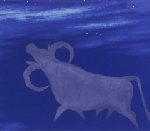
Zentsuji City is the birthplace of Kobo Daishi Kukai (774 – 835), the founder of the Shingon sect of Buddhism, and there is Zentsuji temple related to Kukai. The museum exhibits works also related to Kukai.
There is a memorial hall for Onishi Tadao (1918 – 2007), a lacquer artist who was born and grew up in the City. Onishi used the technique of carved lacquer and created vases, pitchers, Kogo, an incense container, and wares. He made folding screens, pictures of carved lacquer and architectural decorations.
And Onishi left the picture of carved lacquer, ”Mao no Sato the 75th Zentsuji Temple” (of Shikoku Reijo, 88 temples of Shikoku’s holy spots), which has the theme of Saeki Mao – the real name of Kobo Daishi Kukai, before he became Buddhist.
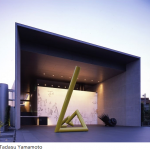
Inokuma Genichiro (1902 – 1993), a Japanese figurative artist and abstract painter, was born in Kagawa Prefecture. In Tokyo, he studied under Fujishima Takeji (1867 – 1943), a Japanese painter, and in Paris, he studied under Henri Matisse (1869 – 1954), a French painter. After World War II, he was based in New York and Hawaii, and he interacted with Jasper Johns (1930 -), an American painter, and Isamu Noguchi (1904 – 1988), a Japanese American artist and landscape architect.
This museum is “Ekimae Art Museum – a museum in front of the railroad station” that is unique in Japan. It possesses approximately 20,000 works of Inokuma and introduces them in the permanent exhibition, as well as holding temporary exhibitions and workshops on contemporary art.
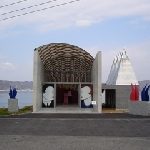
This museum of contemporary sculpture is located at the point where you can see the beauty of the islands of the Seto Inland Sea. It exhibits approximately 30 pieces of 3D work such as Noe Katz (1953 -), a Mexican Postwar & Contemporary artist, who is active in the USA, Marisol Escobar (1930 – 2016), a French sculptor, Tom Wesselman (1931 – 2004), an American artist associated with the Pop Art movement, Giacomo Manzu (1908 – 1991), an Italian sculptor, who created the “Death Gate” at St. Peter’s Basilica Cathedral over 14 years, Hayashi Norichika (1948 – ), a Japanese wood sculptor, Fukai Takashi (1951 – ), a Japanese sculptor, and Ikeda Munehiro (1939 – ), a Japanese sculptor and print maker. It stands out in a landscape like architecture.
– Ikeda Munehiro studied Romanesque art (10th – 12th centuries) en route to a pilgrimage to Spain. There are museums hosteling the mind including this museum in the Shimanami Kaido, a 60 km long toll road that connects Japan’s main island of Honshu to the island of Shikoku, passing over six small islands in the Seto Inland Sea. The Shimanami Kaido is also the art of the pilgrimage in Japan.
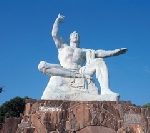
Heiwakinenzo, the statue is for holding funerals for victims of the atomic bomb and praying for global peace. This statue expresses power and youth, by Kitamura Seibo (1884 – 1987), the Recipient of the Order of Culture, who came from Shimabara City Nagasaki Prefecture and wished for peace. This statue is a bronze statue completed on August 8, 1955. It is 9.8m tall, stands on a 3.8m pedestal, and weighs approximately 22t.
This statue symbolizes the love of God and the mercy of the Buddha. The Buddha’s right hand is pointing to heaven, showing the past “threat of the atomic bomb”, while its left hand extends horizontally, showing the future of “peace”. And the lightly closed eyelids show the present “holding funerals for victims”
